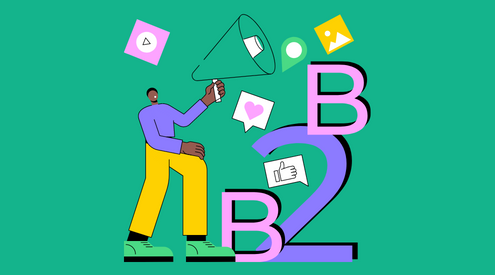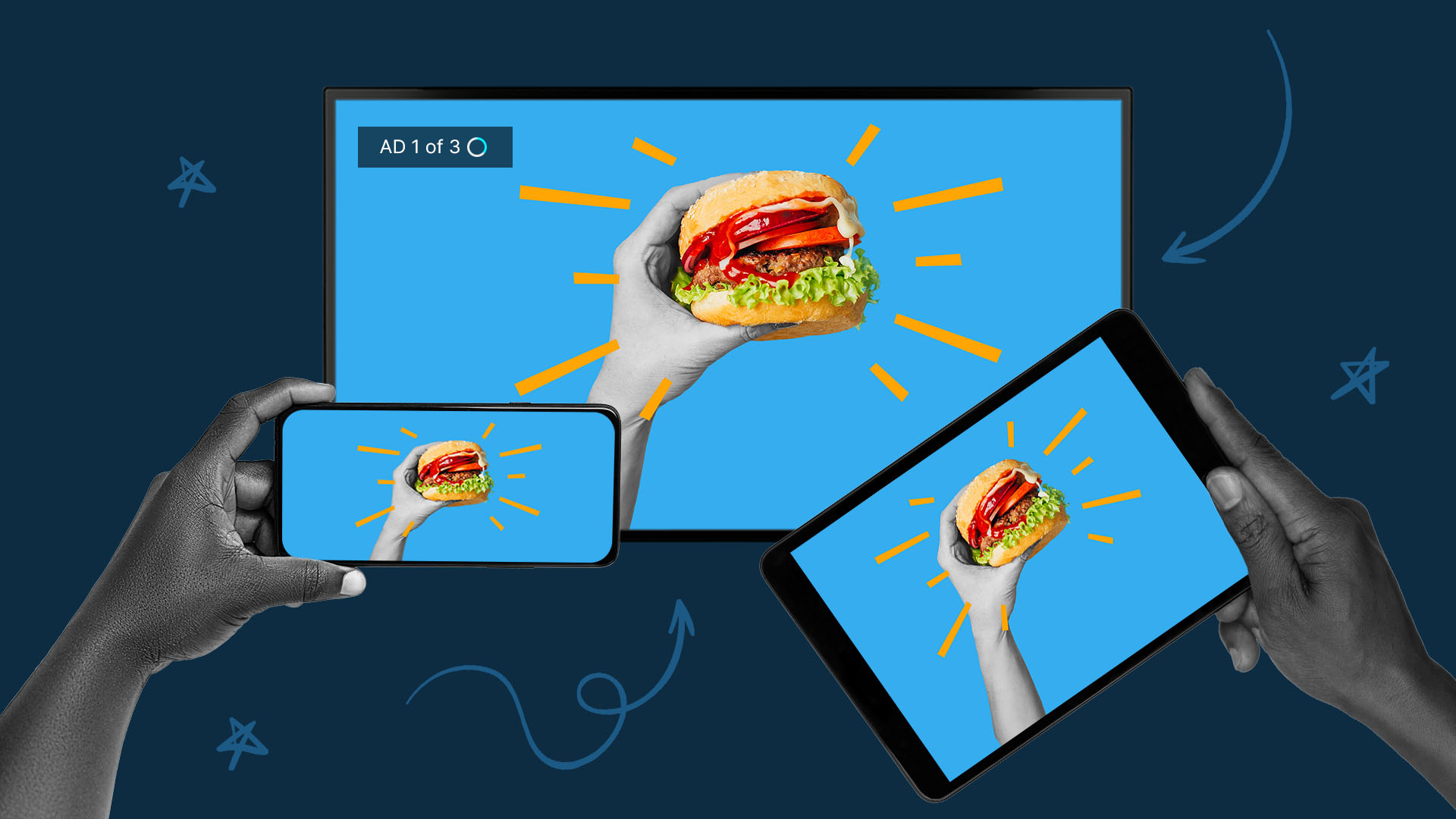Creative Storytelling Strategies for B2B Businesses

“Marketing is no longer about the stuff you make but about the stories you tell.”
Seth Godin said it well, and any modern marketer knows this is gospel truth. Perhaps B2C marketers live by this quote more religiously than their B2B peers, going by the many successful B2C storytelling ads we’ve savored — think Bud Light ads, for instance.
However, more B2B entities are today embracing creative brand storytelling to infuse some personality in their otherwise suit-and-tie brand marketing. You shouldn’t play catch up either. Considering that about 50% of businesspeople are more inclined to purchase a product or service that utilizes emotional appeal to demonstrate personal value, embracing creative storytelling in your B2B advertising strategies is all-important.
Even so, creating appealing storytelling ads for your B2B video marketing isn’t plain sailing. You must master the art of infusing character without dislodging your brand’s intrinsic value. Your storytelling ads must be relatable and professional. Say you go for humor. Stanford Business will tell you humor is serious business.
B2B brand storytelling is indeed a delicate balancing act that you should aim to score big. Good thing these strategies will get you up and running. Let’s weigh in.
Choose a Relatable Story
Your B2B story should always revolve around your customer. Think of it this way — your customer is the main character, their pain points are the villain, and your product or service is the hero.
Still, not every story will resonate with all your customers. Depending on their roles, professionals within the same organization may use your product differently or derive disparate value from your services.
That’s why you need first to complete an in-depth target audience research to know which segment of your audience will relate to a particular brand story. It will guide you in creating multiple buyer personas for each segment. Also, the customer feedback you collect through voice-of-customer (VOC) research from case studies, reviews, testimonials, and other sources will complete your audience research.
This means you may have multiple stories targeting different buyer personas. For instance, if you’re a SaaS business, you may create a story for Chief Technical Officers (CTOs) and another for Chief Marketing Officers (CMOs).
Segmenting your audience gives you a better chance to choose or craft a relatable story with a higher possibility of yielding a profitable business action.
Instill an Emotional Connection
Overall, B2B buying decisions are seen as more rational than emotional, which is why most B2B marketers may focus on product differentiation messages over emotive storytelling ads. But according to a LinkedIn B2B Institute report, emotions play a big part in B2B decision-making. The report indicates that emotional advertising is far more effective for long-term brand building while product-based messaging is better for short-term sales.
Given the multilayered decision-makers involved in the B2B buying journey, establishing an emotional connection may be more complex than in B2C marketing. Yet, it’s doable if you zero in on rational elements such as trust, partnership, reliability, and credibility.
Remember, B2B buyers are less likely to be influenced by primal emotions such as materialism, pleasure, fear, or greed. Instead, they’re driven by more rational emotions such as utility, need, and perceived value. These are the emotional points your storytelling ads should focus on to appeal to B2B buyers.
And if you’re worried emotive B2B marketing may not match the return on investment (ROI), fret no more — there’s data to back it up. The LinkedIn B2B Institute study referenced above further states that B2B marketing strategies with an emotional appeal are seven times more efficient in boosting revenue, profits, and sales than rational marketing.
Open With an Engaging Hook
Introductions can sell or tank your story. A good first line will hook your readers to keep them reading, while a sub-par first line will only increase your bounce rate. Writing magnetic introductions for your B2B brand storytelling is even more consequential because:
- B2B buyers have limited time
- B2B buyers have many options at hand
- B2B buyers are more critical
Thus, it takes more precision to target B2B buyers. A good story introduction puts you in good standing by impressing your B2B audience from the get-go. To get a first-hand idea, let’s contrast these two opening lines:
- This report summarizes our cumulative decade-long customer research studies in the U.S. market, addressing the increasing concerns over product quality vs. pricing.
- Finally, we know what customers think about product quality vs. pricing, and it’s not what you know — it’s a game-changer.
The first introduction can be too overt for a busy B2B buyer who may already have similar research facts. The second introduction is more likely to interest a B2B buyer because it promises to reveal new game-changing insights.
When writing your hooks for your business storytelling pieces, avoid these common pitfalls:
- Including hardcore statistics with raw data
- Being too legalistic — including unfamiliar jargon and acronyms
- Writing lengthy introductions with overstated backgrounds
Instead, do the following:
- Keep it short and sweet
- Include engaging stats with refined data
- Promise your reader fresh insights and live up to your billing
Plot an Arc (a.k.a. Give It a Beginning, Middle, and End)
In principle, every B2B storytelling ad should have three critical components — conflict, climax, and resolution.
Think of the conflict factor as the beginning of the story where you introduce your customer and establish their pain points or conflict. You must have researched your target customers’ challenges in depth to nail them down. If you misstate the conflict, your entire story will be null and void because it won’t interest your intended audience.
The climax factor is the middle of your story, where you outline how your products and services solve the conflict. This is your chance to paint your product or services as the hero of the storytelling ad. Against this backdrop, infusing your product messages subtly and deftly without coming off as a hard sell is more effortless and seamless.
Lastly, the resolution factor is the end of your storytelling ad, where you explain how your product and services improved the customers’ business and wellbeing after resolving their pain points. You should document real-life examples and attach numerical evidence where possible. The resolution should be verifiable and not just rhetoric.
Dispense With Buzzwords
Like many B2B marketers, you may be fond of your industry or in-house corporate lingo. It’s okay to use business jargon while conversing with your peers. But when communicating to your B2B audience, you may want to throw out all of the business-y words you may have used in the past.
Instead, study your audience’s mannerisms to pick out their corporate speak. This empowers you to speak to your B2B buyers in their language, making your story more relatable. It will also reinforce your brand trust because your B2B buyers will perceive you know their business or industry all too well.
Remember, storytelling ads should be about your customers, their business, and their business pain points. It’s, therefore, more empathetic to assimilate their corporate lingo into your brand storytelling than use your internal buzzwords.
Trust QuickFrame To Craft Premium Data-Driven Storytelling Ads
Fine, you have all these creative storytelling strategies in the bag. But the more difficult task is finding good talent to produce your storytelling ad. The truth is making high-quality ads is time-intensive, and it takes lots of resources and knowledge to craft one from scratch.
You need high-flying video makers who will take your storytelling ad script and turn it into a video ad while charging modest prices. That’s where QuickFrame comes in. With QuickFrame, you have a dynamic platform where you can connect with talented video content makers who’re ready to deliver within a short turnaround time. Besides connecting you with the top video makers, QuickFrame helps you generate fast, affordable, and compelling content by optimizing every aspect of production and creativity.
Contact us today, and let’s help you tell your brand story in style.
Do More with Video
Learn how we can help you produce more quality videos affordably and at scale.


